A key component of revenue marketing is ensuring that the marketing and sales departments are in perfect harmony - though this currently isn't the case for many organizations.
Creating synergy between these two departments can support continual innovation, collaboration, and a healthy bottom line. By collaborating well and sharing ideas, it’s easier for everyone to create campaigns that are effective and generate results.
Our State of Revenue Marketing report, 2022, is packed full of data about the current state of marketing and sales alignment, and the state of marketing and sales communication.
In this preview, we share some of our findings related to marketing and sales alignment within organizations. But you can also download the full report for a more in-depth look at revenue marketing overall.
Alignment rating
In the report, we asked our respondents to give their thoughts on the current state of marketing and sales alignment within their organization, rating it on a scale of “Excellent” to “Terrible”.
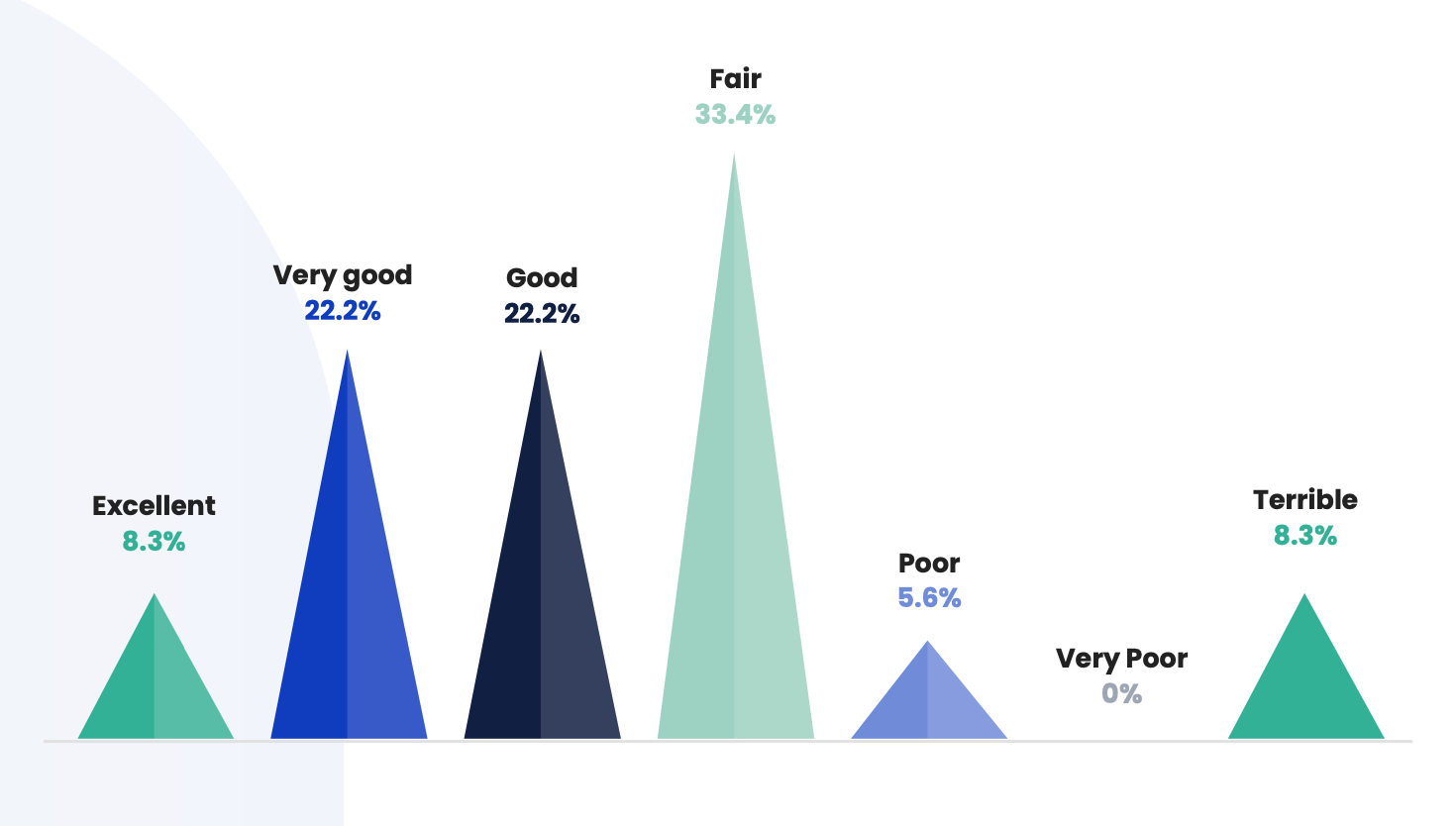
Results varied, but the highest scorer was a middling “Fair” at 33.4%. A good sign though is that “Good” and “Very good” received the second highest results with 22.2% respectively, with just 8.3% of respondents considering their alignment to be “Terrible”.
So we can see that more needs to be done to get marketing and sales departments better aligned.
You can take a look at our dedicated Marketing and Sales Alignment Playbook for expert insights, and actionable tips and tricks for getting these departments in harmony.

Biggest challenges to alignment
For those respondents who rated their marketing and sales alignment low (“Terrible”, “Very poor”, or “Poor”), we wanted to know what challenges they faced. We asked these respondents to choose one to three options for potential reasons for their misalignment, these are the percentages of respondents that chose each one.
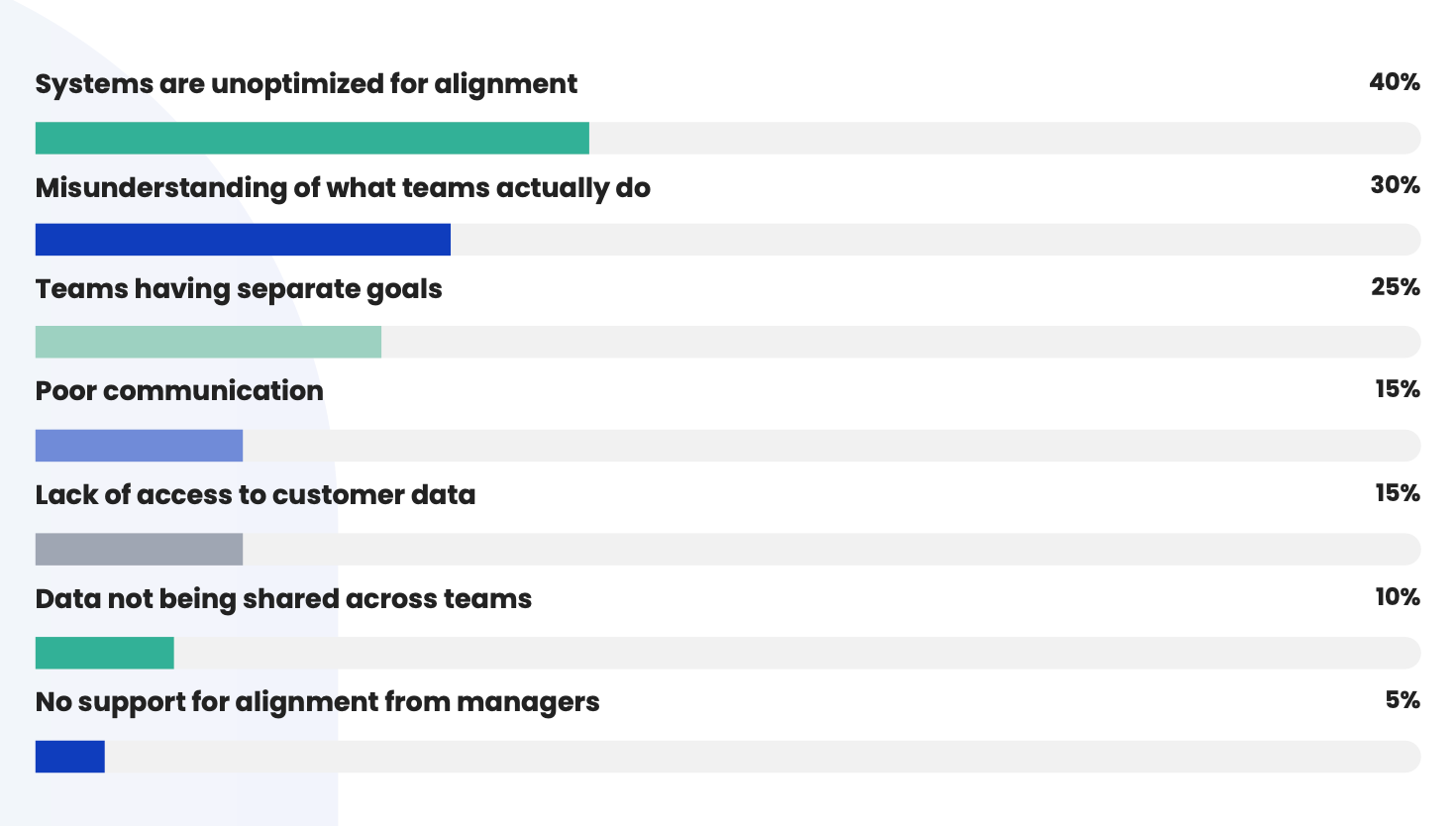
From the results, it’s clear that the biggest problem seemingly facing teams is that their current “Systems are unoptimized for alignment”, with 40% of respondents selecting this as one of
their challenges.
Tech and tools play a big role in alignment and attributing marketing efforts to revenue, which is something we dive deeper into in the MarTech section of the full report.
Processes for supporting alignment
In order for marketing and sales teams to become better aligned, both teams need to work together on a solution - it’s not just going to happen overnight.
To get a sense of how those companies that currently have positive alignment work together, we asked those respondents that gave a “Good”, “Very good”, or “Excellent” alignment rating what kind of processes or infrastructure they currently have in place to support marketing and sales alignment.
This was an open question, and here are some of the most common responses.
- Hubspot workflows
- Weekly work-in-progress reports going through current pipelines
- Reporting using the same tool
- Weekly meetings and monthly reviews
- The same objectives and key results (OKRs) for marketing and sales
- Project management software
- Joint decisions
Communication rating
Miscommunication between marketing and sales can lead to a lack of alignment - and earlier we saw that 15% of our respondents cited “Poor communication” as a key challenge for their alignment efforts.
If marketing and sales can’t communicate, how can they possibly work well together? We asked our respondents to rate the communication between marketing and sales in their organizations from “Excellent” to “Terrible”.
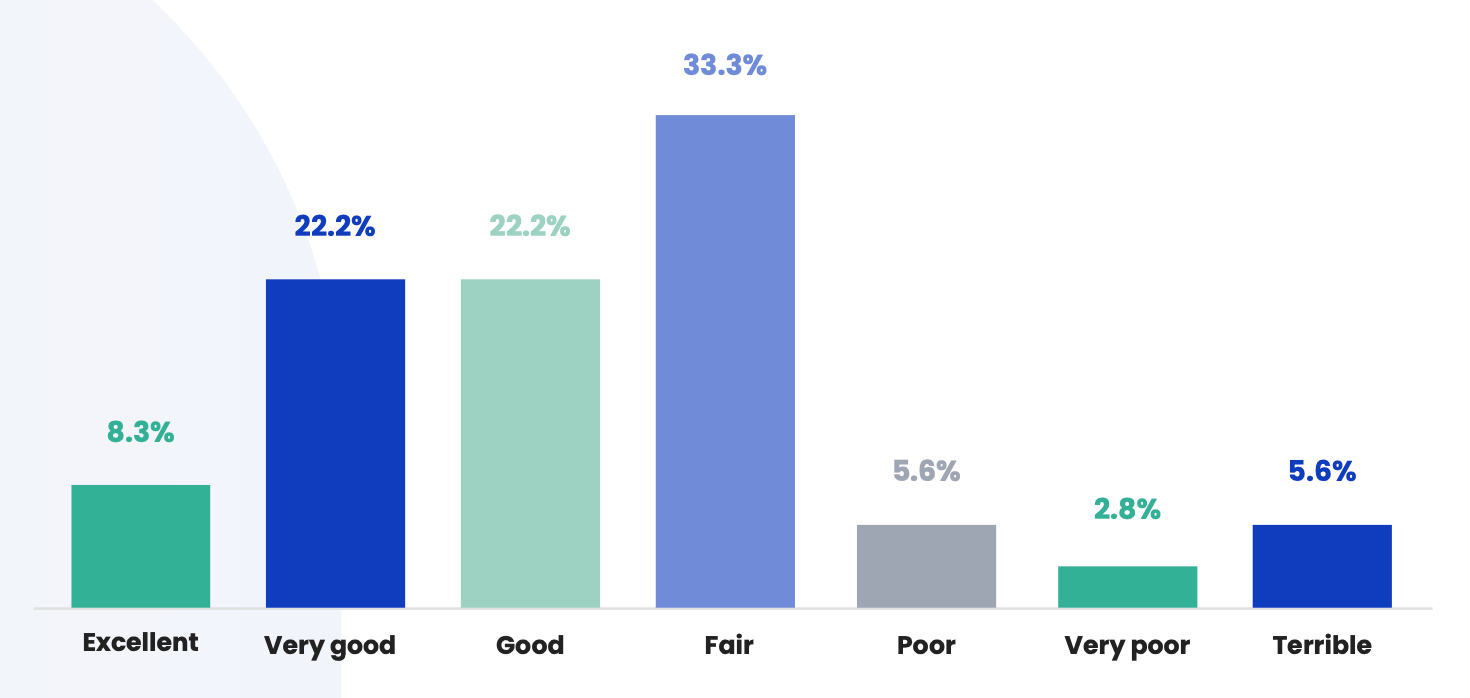
Unsurprisingly, we see a very similar pattern of percentages when compared to overall alignment scores, with “Fair” receiving the most votes (33.3%), and “Good” and “Very Good” fairing second best (22.2%). In all likelihood, a lack of communication can directly cause a lack of alignment between marketing and sales.
Biggest challenges to communication
So, what’s the cause of miscommunication between marketing and sales? We asked those respondents who scored their communication as “Poor”, “Very poor”, or “Terrible” what they believed was causing these woes. Here’s a snapshot of the most common kind of responses.
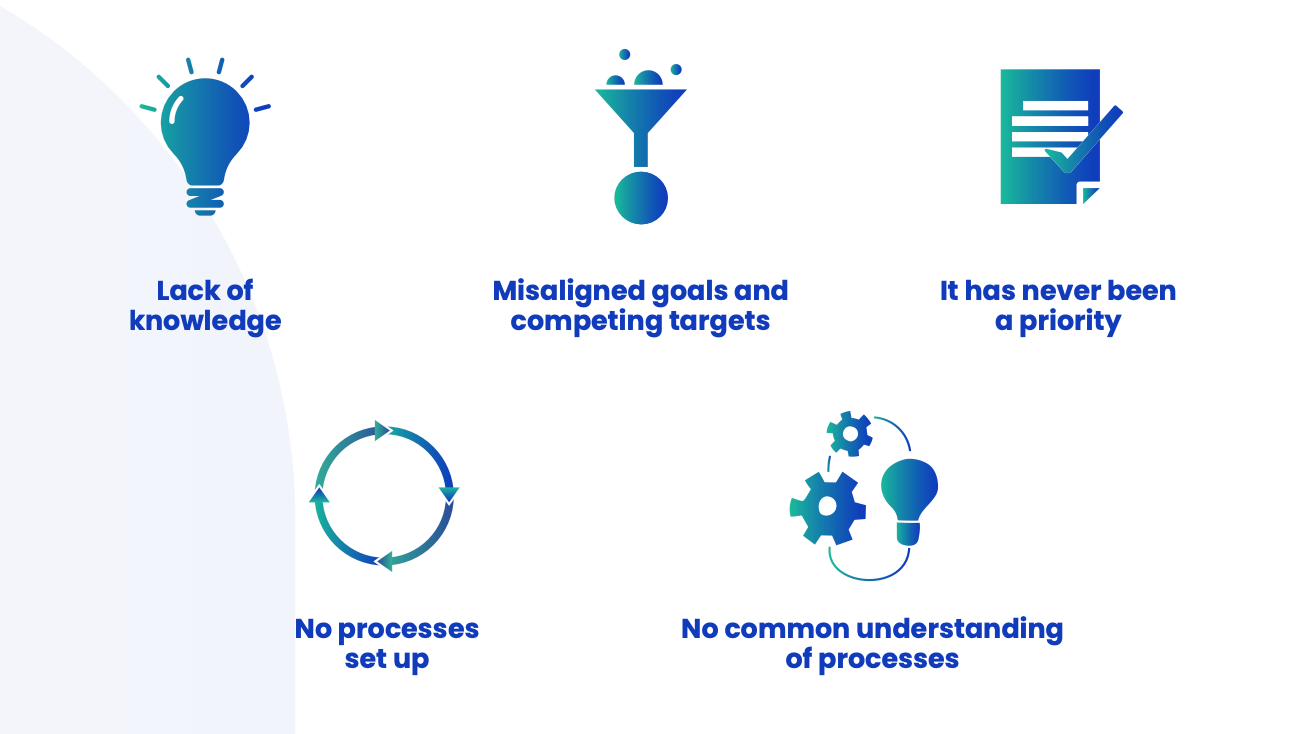
Interestingly, some of the same issues raised for alignment are cropping up again here for communication, highlighting just how closely marketing and sales alignment and good communication are linked.
Goal alignment and having a common understanding of processes have cropped up in both sections. So it’s clear which areas need to be adjusted to improve communication and alignment between marketing and sales.
Processes for supporting communication
On the other side of the spectrum, we wanted to know what those respondents who feel like they have positive communication between their marketing and sales teams do to support this.
For those that rated their communication as “Good”, “Very good”, or “Excellent”, we gave them the open question of what infrastructure and processes are in place to support marketing and sales communication. Here’s a look at the most common responses.

Unsurprisingly, we see similar responses to the section about supporting alignment, with centralized data sharing and regular meetups between the two teams cited as ways that these organizations achieve a positive communication score.
Alignment activities
We wanted to know what kind of alignment activities our respondents engage in at their companies to get marketing and sales on the same page. The survey provided a list of some common ways teams can get better aligned and asked the respondents to select the ones that applied to them.
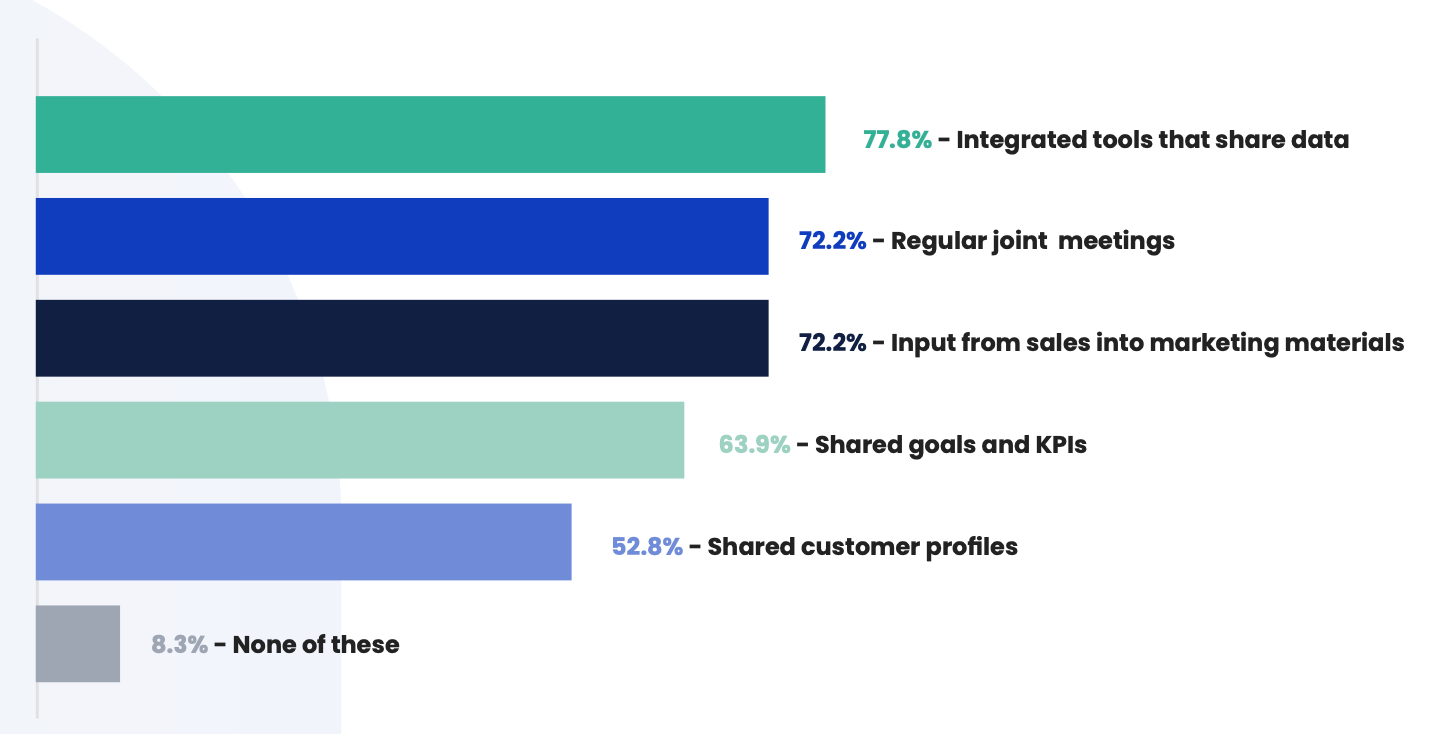
From the results we can see that the majority of respondents have “Integrated tools that share data” (77.8%) and a large portion also take part in “Regular joint meetings” (72.2%), this follows the trend we saw with those who consider themselves to have good communication and alignment, as many cited some kind of regular meetings between these two teams and having centralized data as one of the crucial ways they support alignment.
We were curious whether a lack of these alignment activities contributed to negative reporting of alignment and communication between marketing and sales. So, we looked at those respondents who gave a negative score to both their alignment and communication rating (“Poor”, “Very poor”, or “Terrible”) and found that all of them selected “None of these”, or up to just two of the alignment activities.
Whereas those who rated their alignment and communication as “Good”, “Very good”, or “Excellent” selected three, four, or all five of the alignment activities as something they currently undertake.
Final thoughts
It’s clear that good marketing and sales alignment and communication doesn’t just happen without input, it requires active work from both sides and can include the likes of shared goals, regular meetings, and integrated data.
Want to read the full report?
Interested to read the rest of our findings for revenue marketing in 2022? Download the full report today to discover what the revenue marketing role looks like currently, revenue performance projections and challenges, how marketing is attributed to revenue, and what MarTech is currently in use and if it’s up to task.




 Follow us on LinkedIn
Follow us on LinkedIn


